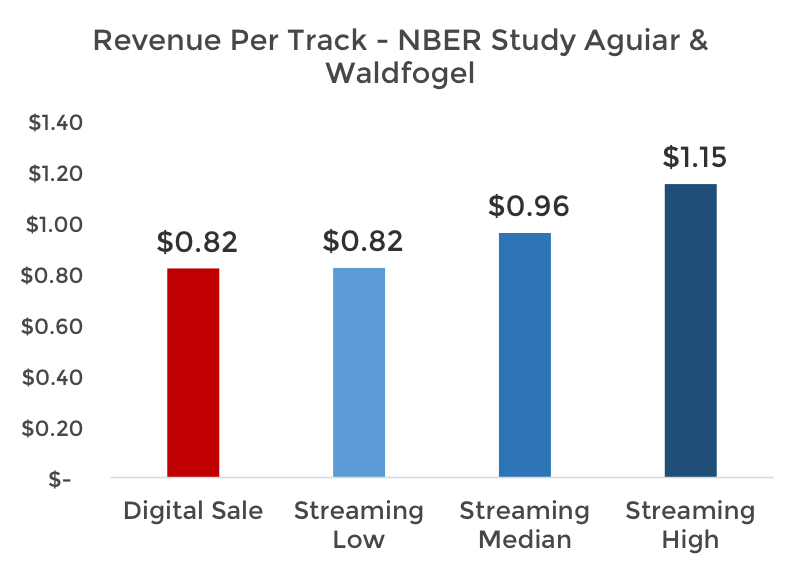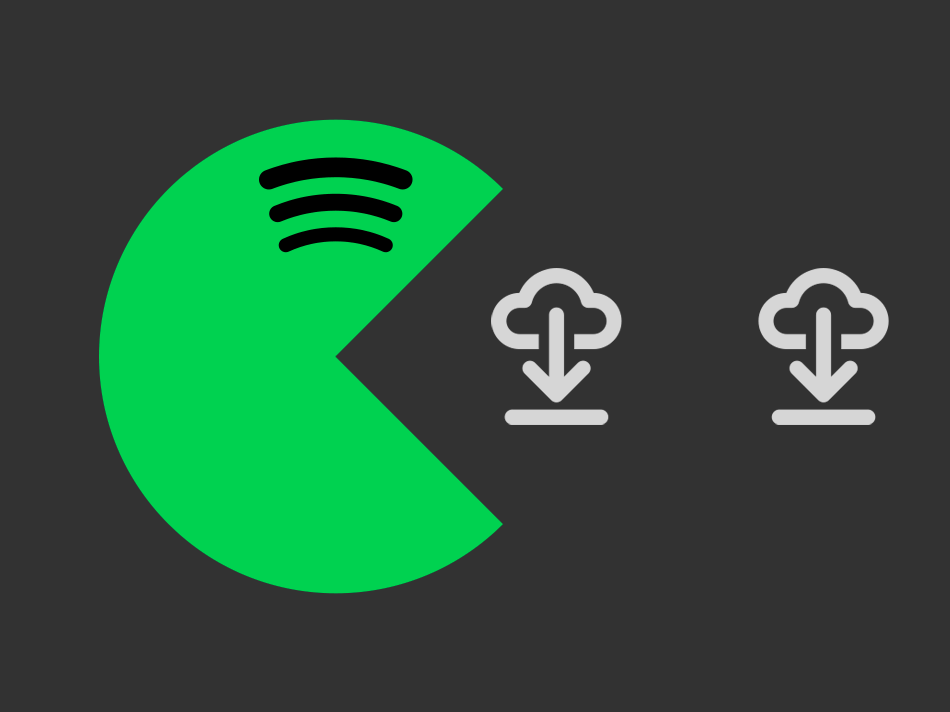Yesterday’s post analyzed the findings of a recent study published by the National Bureau of Economic Research (NBER) and challenged the summary conclusions in the context of pre-existing industry trends. Music industry revenue has fallen consistently since peaking in 1999. Some would like to claim that streaming music services are a cause of the decline even though they arrived well after the downward trend was established.
The NBER study by researchers Luis Aguiar and Joel Waldfogel made a common mistake of equating correlation with causation. In this case, one number appeared to rise while another fell leading them to conclude the effects were neutral. However, there is ample evidence to suggest the industry revenue would have declined in the absence of streaming music services. Therefore, it is clear that ad-supported and subscription based music streaming services are revenue enhancing for the industry.
But wait, there’s more. The underlying math behind the study also shows a net-positive impact for the industry.
Spotify Data Shows a 17% Revenue Increase in Current Period
 The study abstract reports a finding that 137 streams on Spotify appear to displace the sale of one unit of a particular track. It states, “Given the current industry’s revenue from track sales ($0.82 per sale) and the median payment received per stream ($0.007 per stream), our sales displacement estimates show that the losses from displaced sales are roughly outweighed by the gains in streaming revenue.”
The study abstract reports a finding that 137 streams on Spotify appear to displace the sale of one unit of a particular track. It states, “Given the current industry’s revenue from track sales ($0.82 per sale) and the median payment received per stream ($0.007 per stream), our sales displacement estimates show that the losses from displaced sales are roughly outweighed by the gains in streaming revenue.”
Here is the first problem. Multiplying 137 streams by $0.007 is $0.96. That is 17% more revenue from streaming than royalty holders receive from the sale of a digital track. The break even value given these numbers is actually 117 Spotify plays — everything over that number is gained revenue. Spotify reports its per stream payout is $0.006 – $0.0084. At the low end, this is exactly $0.82 per track, which would be revenue-neutral as the study summary claims. However, the higher $0.007 median payout is used as the benchmark which delivers the 17% revenue lift. Some royalty payouts are as high as $0.0084, which is $1.15 per 137 streamed tracks and 40% higher than revenue from a digital track sale.
This looks like a strong argument that streaming music is good for the industry. It is revenue enhancing and not revenue neutral as claimed. But this data is just a starting point as it only considers a finite period of time. Tracks are played over a lifetime and royalty holders are in a position to generate revenue from every successive play, not just a single digital track sale.
Streaming Services Create an Annuity in Future Periods
Sales of music tracks represent a single lump sum payment. The royalty holder receives a flat payment no matter how many times the consumer listens. The question for an artist or a royalty rights holder is how many times would a track play over a lifetime. It is reasonable to assume that a track popular enough to motivate purchase would be listened to 2.63 times per week in the first year, likely weighted more heavily during the time shortly after discovery. That delivers the 137 spins on streaming music and the 17% higher revenue. Would it then be reasonable to assume that the same song would be spun once per month in the ensuing nine years? That would be 108 more spins and would generate $0.756 more for the royalty holders.

Combined with the first year revenue, a track has now earned revenue for royalty rights holders of $1.716 in the decade after initial purchase from a single consumer. That is 109% higher earnings on a track over 10 years. And the royalty rights holder is still seeing an increase of 17% during the first year of release, so their near term earnings are not being delayed for future earnings. They get both.
What about Piracy – Streaming Provides Even More Value
 The study also mentions the expected impact on piracy. The economics website FiveThirtyEight cites the report finding that, “every additional 47 streams displaced one pirated download…but as Waldfogel said, ‘reducing piracy is not the same as increasing revenue.’” That sounds reasonable but is it true? A pirated download is a complete loss of all revenue by that consumer. Those 47 spins on a streaming service generated $0.33 for a royalty rights holder.
The study also mentions the expected impact on piracy. The economics website FiveThirtyEight cites the report finding that, “every additional 47 streams displaced one pirated download…but as Waldfogel said, ‘reducing piracy is not the same as increasing revenue.’” That sounds reasonable but is it true? A pirated download is a complete loss of all revenue by that consumer. Those 47 spins on a streaming service generated $0.33 for a royalty rights holder.
Follow the Math and Bust the Myth
Stories and gut feelings often lead people to believe one thing when data show the opposite is true. While some high profile artists and music label executives have suggested that streaming is hurting industry revenue, a close study of the data presented by Aguiar and Waldfogel show higher industry revenue in the near term even before considering the positive impact of reduced piracy. When you add new revenue that would have been displaced by piracy and consider long-term annuity benefits the revenue potential more than doubles over a 10-year period.
These facts alone bust the myth peddled by music label executives that streaming services are “stiffing” the artists. Previous analysis shows that diminutive artist royalty checks are driven primarily by the labels taking 73% or more of streaming royalty payments before artists receive a dime. In reality we now see that the total royalty is actually 17-109% higher from streaming services than digital music sales, which helps all royalty rights holders including artists.
Saving the Industry
 This brings us to the final point for today. Will Page is director of economics at Spotify. He commented in an interview with FiveThirtyEight.com, “‘The business of [music] ownership has been in decline long before Spotify came along,’ he said. ‘Is it fair to assume people were going to continue buying in the first place?’” The answer is no. As we showed in yesterday’s post, people weren’t buying music at the same rate and streaming services are actually helping to reverse a trend of industry revenue decline that preceded their existence.
This brings us to the final point for today. Will Page is director of economics at Spotify. He commented in an interview with FiveThirtyEight.com, “‘The business of [music] ownership has been in decline long before Spotify came along,’ he said. ‘Is it fair to assume people were going to continue buying in the first place?’” The answer is no. As we showed in yesterday’s post, people weren’t buying music at the same rate and streaming services are actually helping to reverse a trend of industry revenue decline that preceded their existence.
When the U.S. Coast Guard rescues 500 people from a sinking ship we rightly say they saved 500 lives and not that the human toll was population-neutral. The ship was going down and people were saved before going down with it. Likewise, it is clear that streaming music services have provided a lifeline to the music industry.
Related Posts
Part 1: Spotify and Other Streaming Services are Saving the Music Industry
Artists Should Blame Record Labels, Not Music Streaming
Taylor Swift vs. Spotify: What Advertisers Need to Know
GIF Illustration by Mikel Jaso
